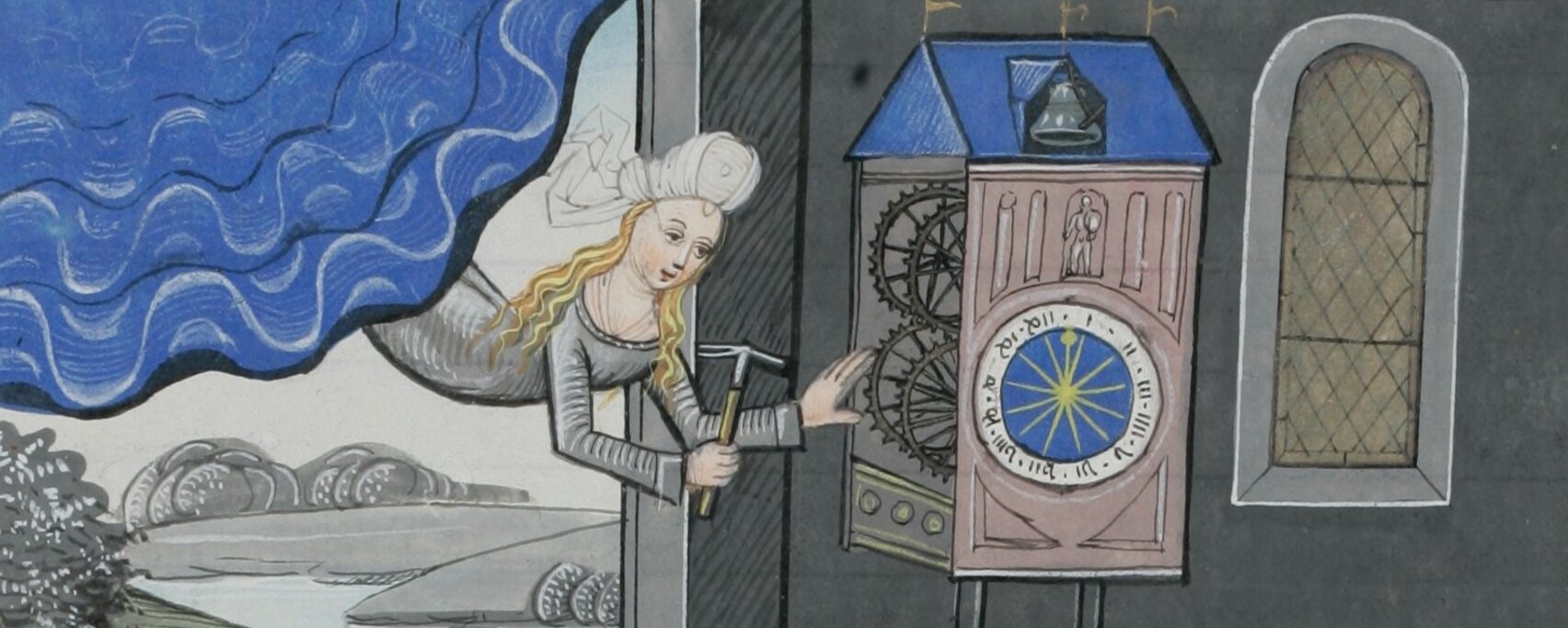
Exhibition
Songs of Time
Conditor alme siderum
This hymn, now known as ‘Creator of the Stars of Night’, was sung during the season of Advent leading up to Christmas. It was played on the first mechanical clock known to play a named melody on its bells. According to a later compilation of medieval chronicles from Normandy, the clock was installed at the monastery of Ste Catherine
in Rouen in 1321. The chronicle entry reads: ‘at that time, a clock was placed in the said church of Saint Catherine, which was easily heard at Roncherolles [a nearby village]. Indeed, it was constructed so that it pronounced the hymn Conditor alme siderum in an unaccustomed yet pleasing manner.’
Conditor alme siderum, from a noted breviary of the Cathedral of Notre Dame, Paris, c.1300. Paris, Bibliothèque nationale de France, MS lat. 15181, fol. 106r.
Sancti Spiritus assit nobis gratia
Sequences were popular with the makers of early musical clocks for their well-known, simple melodies. This sequence for the Christian Feast of Pentecost (a time celebrating the descent of the Holy Spirit) was played by multiple medieval and early modern clocks including at the Abbey of Averbode, a Premonstratensian monastery now located in Belgium. After a catastrophic fire at the Abbey in 1499, the house’s accounts record that bell founders from ’s-Hertogenbosch were paid to comb the ashes of the ruined Abbey church to salvage metal for the new clock and bells.
Gradual from the Abbey of Averbode, AA ms IV 419, fol. 163r.
Vater Unser im Himmelreich
The reformer Martin Luther’s German version of the Lord’s Prayer was a popular choice for melodies played on the clocks associated with reform-minded rulers in sixteenth-century northern Europe. This chorale melody can still be heard on surviving clocks including the famous Isaac Habrecht clock of the late sixteenth century. Now housed in the British Museum, this astonishing clock was built in imitation of the cathedral clock of Strasbourg.
Measuring and Marking Time
Click on the images for more information.



